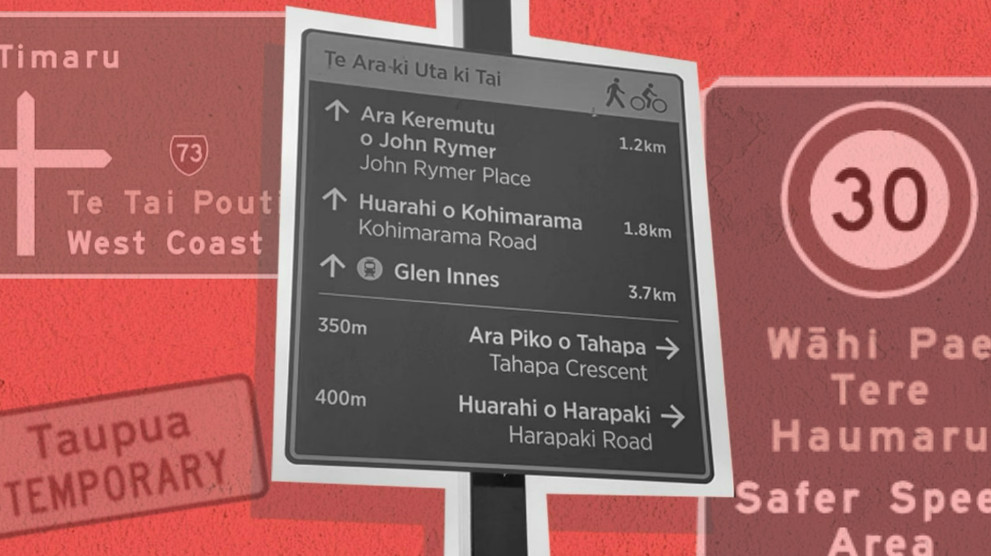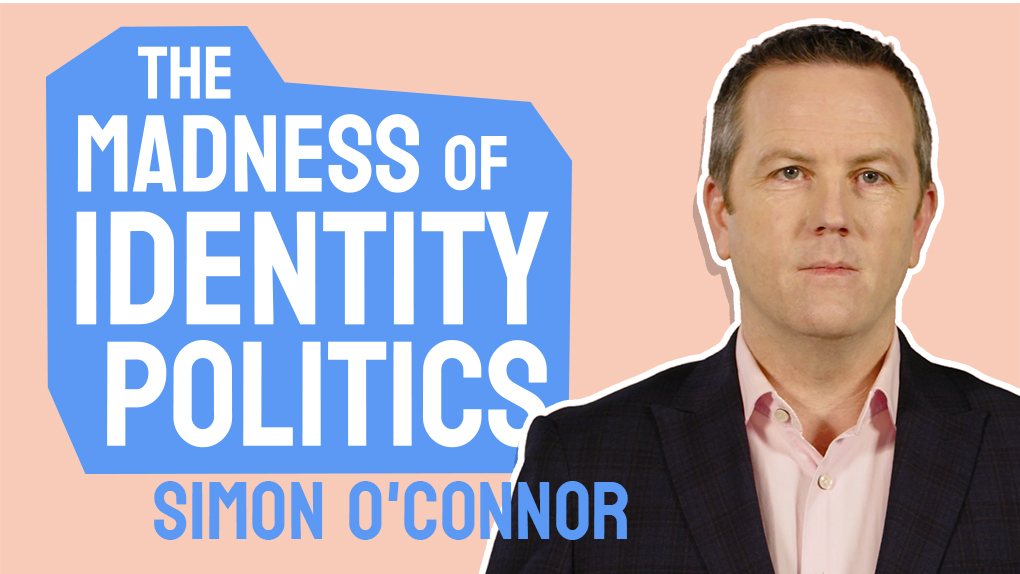Are bilingual road signs safe or even sensible?
Graham Adams, Contributing Writer
16 June, 2023
Debate has been shut down by allegations of ‘dog-whistling’.
At a time when the dilapidated state of New Zealand’s roads is a major public concern and the government has committed itself to a zero traffic deaths programme that includes lowering speed limits, the national transport agency apparently thinks offering compulsory te reo lessons on roadside poles and motorway gantries is a good idea.
To aid those who want to make a submission on its proposals, Waka Kotahi New Zealand Transport’s short “Consultation materials” document sketches the background to the suggested changes and links through to a much longer document showcasing 94 bilingual road signs titled “Consultation overview”.
If you read these documents, you’ll be largely reassured that bilingual signs don’t endanger human life and limb — although you may be unsettled to read that research shows only that such signage has “not led to an increase in the number of people killed or seriously injured where this has been measured”. No word on people who are merely moderately injured as a result of being confused by the signs.
The text does acknowledge that “when reading bilingual traffic signs people may take longer to read a sign and react to it, vehicle following distances may shrink, and driving speeds increase in some instances” but the safety risks can apparently be “mitigated” by good design.
At this point, you may be wondering if the risk of confusing or distracting drivers is worth it. After all, English is spoken by nearly every New Zealander while only a tiny fraction of the population — including Maori — speak te reo. Why introduce te reo on signage at all if road safety may be endangered?
The extraordinary answer can be found in a linked 39-page “research note” that states: “Where cultural safety is under threat (such as when an indigenous language is under threat of extinction), the aggregate public good may demand that relatively small decrements in public physical safety should be ranked below cultural needs.”
Worse, in practice, the “decrements” may not actually be small. The document also warns that “sub-optimal sign design could lead to negative outcomes that are more substantial”. In short, get the design of bilingual signs wrong and they could be seriously dangerous.
Virtually none of the public debate has delved deep into the safety aspects of bilingual signs. Claims they may be confusing have been derided by the media, with Newshub journalist Amelia Wade leading the way with a televised 13-minute ambush in Parliament’s corridors. She came armed with a bilingual sign.
Accompanied by a posse of journalists, she bailed up National MPs — including Judith Collins, Simeon Brown, Nicola Willis and Chris Luxon — and demanded to know whether they could understand her sign, which had “Te Ara Puaki” on the top line and “Expressway” less prominently beneath it.
Unfortunately, none of the National MPs was travelling at 50 km/h or more at the time, which rendered Wade’s stunt pointless, and more like a show trial designed to deter potential dissidents than an attempt to elicit reasoned debate.
Hamilton West MP Tama Potaka summed up the problem succinctly. When Wade demanded to know if he could understand the sign, he replied: “I think nearly everyone in New Zealand will understand ‘Expressway’ [but] a lot of people will not understand ‘Te Ara Puaki’. At the end of the day, it’s a waste of time looking at bilingual signs if you’re trying to avoid potholes on the road.”
Such practical considerations, however, cut no ice with this government’s relentless push to introduce a 50:50 “partnership” between iwi and the Crown everywhere it can. Putting Maori words on road signs is merely another expression of this hotly contested interpretation of the Treaty. To fulfil the promise of the document signed in 1840, it is claimed te reo must be given equal standing with English.
In practice, the Maori words will be more prominent than the English. The transport agency explained why the words in Maori on the suggested signs are placed above the English: “Given that te reo Māori is used less than English throughout Aotearoa New Zealand, Waka Kotahi is of the view that it needs to be promoted if it is to achieve equality with English in New Zealand.”
This despite the fact that research from Wales showed that when the English words were presented above the Welsh words on advisory signs, drivers showed no increase in reading times, although they did the other way around.
Faced with criticism from National and Act that the signs should be solely in English as the language that all drivers understand, the Prime Minister — echoed by Associate Transport Minister Kiritapu Allan — quickly reached for the lazy slur of “dog-whistling”, which in this case can only mean racism.
Hipkins has used the same accusation before about critics of Three Waters and seemed surprised when he was interviewed on AM and found host Ryan Bridge challenging him on his name-calling over the road signs.
Bridge asked the Prime Minister, “You have accused Chris Luxon of dog-whistling, which is a hugely provocative and damaging thing for him to be wearing. Who was he dog-whistling to, in your opinion?”
Instead of focusing on Luxon, Hipkins referred to comments made by Simeon Brown, National’s transport spokesperson, that road signs should only be in English because “most people speak English”. He described them as a “dog whistle” and said National should be called out over them.
While Bridge didn’t disagree at all about the merits of using bilingual road signs, he persisted in his interrogation over the language Hipkins had used about Luxon. “Who was [Luxon] dog-whistling to — to ‘get votes’, as you put it?” he asked the Prime Minister. “Are you saying he is dog-whistling to racists?”
It was amusing to watch it slowly dawn on Hipkins that Bridge would not be deterred in his quest to expose his underhand tactics. He blustered about there being “nothing to fear” from bilingual signs until Bridge asked again: “Are you saying that anybody who opposes the signs is inherently racist?”
Hipkins: “No, I’m not saying that at all.”
Bridge: “So who is he dog-whistling to?”
Hipkins replied: “There is a racist underbelly in some of the public dialogue around this and that does seem to be an audience the National Party are trying to appeal to.”
It was clear he didn’t want to admit to be calling everyone opposed to bilingual road signs racist, even though that was the obvious implication of his repeated use of the term “dog whistle” — which is an easy way of closing down the whole debate. Faced with Bridge’s questions, he no doubt could see his accusation might run too close to suggesting National’s supporters were “a basket of deplorables”.
The NZ Herald’s Simon Wilson, however, didn’t shy away from implying Luxon’s supporters were, indeed, deplorables when he questioned him at the end of a meeting in Auckland’s Birkenhead, the first stop of the National leader’s “Get NZ Back on Track” tour.
Wilson said: “There were a number of quite extreme questions after your speech today — and they got applauded often… ‘The Waitangi Tribunal has done no good’… ‘The UN agenda from the World Economic Forum is ruining the country’… ‘ACC rules should be changed so personal liability comes back into play’ [and] a lot of anger at te reo. Does it worry you that you have an audience of people that are thinking those things?”
Luxon — who is learning te reo himself — handled the question adroitly, extolling the benefits of getting out “to meet everyday New Zealanders” and listening to what they have to say, even if he didn’t necessarily agree with the sentiments they expressed. “They are entitled to their opinion, just as you are entitled to yours,” Luxon told Wilson — a notion that would come as a shock to many journalists.
In his subsequent write-up in the Herald, Wilson seemed puzzled that bilingual road signs might even become an election issue. He viewed the objections as a symptom of deep-seated racism.
In fact, thoughtful critics have a variety of eminently reasonable grounds to object to bilingual road signs — ranging from their cost and implications for safety to the pointlessness of effectively using road signs across the country as flash cards in the hope of raising the status of te reo and teaching a smattering of words in the process. The chances of drivers absorbing the Maori words for “bus” or “lane” or “motorway” as they scan signs for the English words seem extremely low.
It is true there are deeper frustrations that animate some of the opposition to bilingual road signs. For some opponents, the signs have become a lightning rod for the resentment they feel about being rail-roaded into race-based social and political changes that Labour never campaigned for in 2020 and they were never asked to vote on. Consequently, they will see the opportunity to offer feedback on the proposals as a sham. They will suspect that no matter how many objections are lodged before the deadline of June 30, they will make no difference to the predetermined outcome.
In short, the government’s quixotic campaign to achieve “equality” between New Zealand’s lingua franca and a language understood by a minority of the population will be viewed by some as just another example of ideology trumping common sense. And who could blame them?
Graham Adams is a freelance editor, journalist and columnist. He lives on Auckland’s North Shore. To receive pieces like this in your inbox subscribe to our newsletter.





